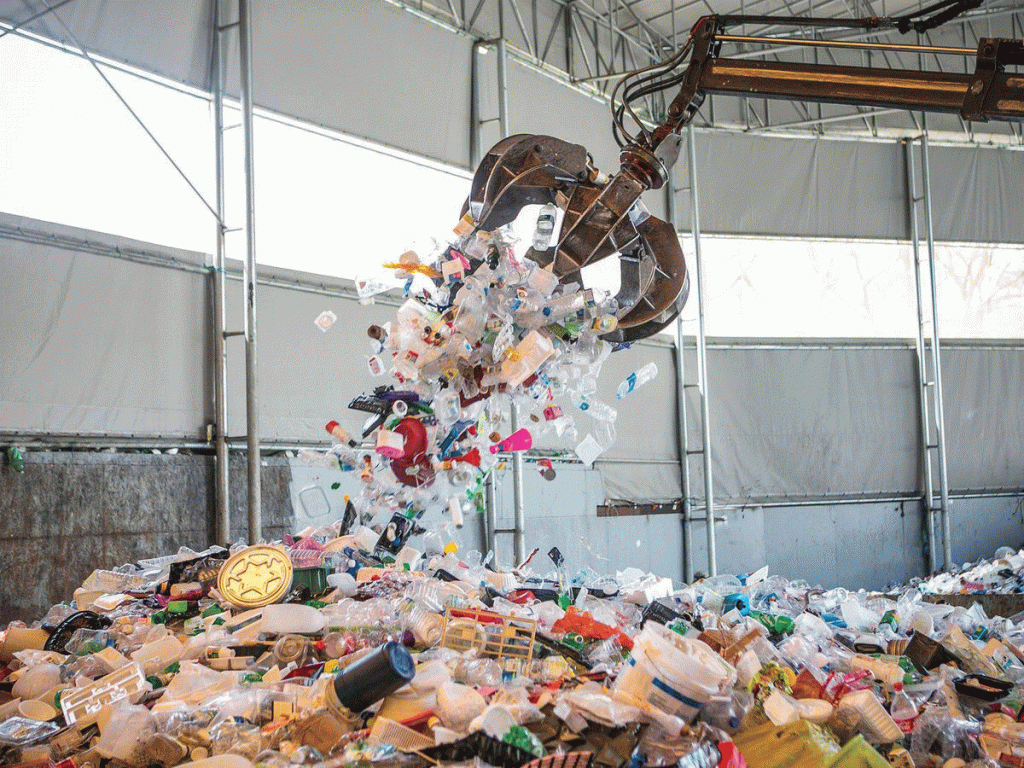China’s tougher trash standards hurting Central Coast recyclers

China has imported 106 million tons of plastic trash since 1992, but it recently imposed a much higher standard for contamination.
Staff and wire report
A global trash crunch that has created tons of used plastic and paper piling up at recycling centers across America has hit home on the Central Coast.
Trash haulers are asking for extraordinary rate hikes as they slow picking lines and add staff to meet sharply reduced contamination limits for goods shipped to China. The few alternative markets are being swamped with product, and prices have plunged.
“We are in the midst of a very challenging turn in the recycling market,” Daniel Harrison of Gold Coast Recycling wrote to John Brooks at the city of Thousand Oaks earlier this year in an effort to gain an extraordinary rate increase. “What we are dealing with right now is unprecedented,” he wrote.
The crunch started earlier this year when China announced it was reducing contamination levels for paper from 10 percent to 0.5 percent. Chinese authorities followed up with an outright ban on imported recyclables from May 3 until June 4.
The impact has been enormous. China has imported 106 million tons of old bags, bottles, wrappers and containers worth $57.6 billion since 1992, the first year it disclosed data. That’s equal to more than 50 percent of the world’s recycling exports or more than 7 million metric tons in 2016.
For Gold Coast, the recycling arm of Ventura-based Harrison Industries, it means running conveyor belts at much slower speeds so an increased staff of workers can manually sort trash to meet the new standard. The added costs have prompted the first request for an extraordinary rate hike since Gold Coast went into business in 1990.
According to a report from CalRecycle, standards for contamination of paper waste have gone from 25 percent or 500 pounds per ton to just 10 pounds per ton — at a time when commodity prices are extremely low. In plastics, the ratio has gone from 200 pounds per ton to 10 pounds.
By 2030, an estimated 111 million metric tons of used plastic will need to be buried or recycled somewhere else — or not manufactured at all. That’s the conclusion of an analysis of UN global trade data by University of Georgia researchers.
Factories have churned out a cumulative 8.3 billion metric tons of new plastic as of 2017, the same Georgia team reported last year. Even 1 million metric tons, the scale that this material trafficks in every year, is hard to visualize in the abstract. It’s 621,000 Tesla Model 3s. It’s 39 million bushels of corn kernels. The world’s 700 million iPhones make up roughly a tenth of a million metric tons.
Nearly four-fifths of all that plastic has been thrown into landfills or the environment. A tenth of it has been burned. Several million tons reach oceans every year, sullying beaches and poisoning vast reaches of the northern Pacific. Just 9 percent of the total plastic ever generated has been recycled.
As the industry matured and the negative effects on public health and the environment became clear, China got more selective about the materials it was willing to buy. A “Green Fence” law enacted in 2013 kept out materials mixed with food, metals or other contaminants. Exports consequently dropped off from 2012 to 2013, a trend that continued until last year, when the world’s biggest buyer warned that its scrap plastic purchases would stop altogether.
• Eric Roston at Bloomberg News contributed to this report. Contact him at [email protected].












